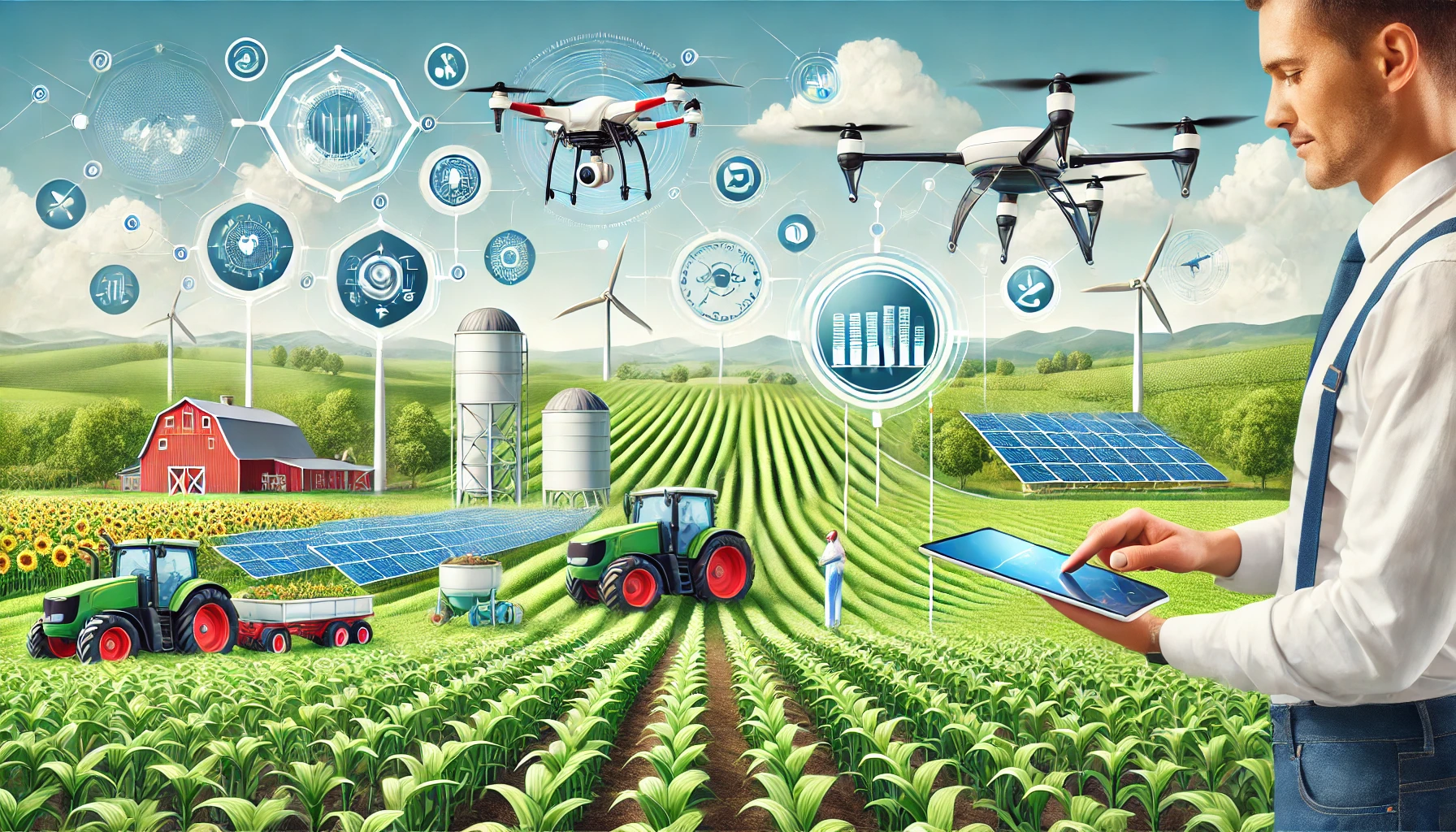The Role of Technology in Modern Farming
The Role of Technology in Modern Farming: Precision Agriculture and Beyond
As the global population continues to rise, farmers face increasing pressure to produce more food while using fewer resources. This is where technology steps in, transforming traditional farming methods into highly efficient, data-driven processes. From precision agriculture to AI and robotics, modern technology is helping farmers improve yields, conserve resources, and meet the food demands of the future.
1. Precision Agriculture: Optimizing Every Square Inch
Precision agriculture is revolutionizing the way farms are managed. Using advanced technologies like GPS, sensors, and drones, farmers can collect real-time data on soil conditions, crop health, and weather patterns. This allows for:- Targeted application of inputs such as water, fertilizers, and pesticides, reducing waste and environmental impact.
- Monitoring crop growth more closely to address issues like pest infestations or nutrient deficiencies early.
- Maximizing yields by applying resources only where they’re needed.
For example, drone imaging can help farmers spot areas of poor crop health, while soil sensors provide data on moisture levels, allowing for more precise irrigation.
2. Drones and Satellite Imagery: Eyes in the Sky
Drones and satellite imagery are providing farmers with a bird’s-eye view of their fields. This high-tech perspective allows them to monitor large areas efficiently and:- Detect early signs of crop stress caused by drought, disease, or pests.
- Assess soil quality and moisture levels for better water management.
- Create detailed maps of field variability to fine-tune planting, watering, and fertilizing strategies.
Drones are particularly valuable for large-scale farms, as they can cover vast areas quickly, providing actionable insights in real-time.
3. Smart Irrigation Systems: Saving Water, Maximizing Growth
Water management is critical in agriculture, and smart irrigation systems are a game-changer. These systems use sensors to monitor soil moisture levels and weather conditions, adjusting water delivery accordingly. Benefits include:- Preventing over-irrigation which can lead to water waste and soil erosion.
- Reducing water consumption while ensuring crops get the hydration they need.
- Boosting crop yields by providing water when and where it's most needed.
In regions facing water scarcity, smart irrigation is not only sustainable but essential for maintaining productivity.
4. Robotics and Automation: Labor Efficiency in Agriculture
Robots and automated machinery are becoming more common on farms, performing tasks that would otherwise require significant human labor. From automated harvesters to planting robots, these technologies:- Increase efficiency, allowing farmers to cover more ground in less time.
- Reduce labor costs by automating repetitive tasks such as weeding or planting.
- Improve precision, as robots can perform delicate tasks, like fruit picking, without damaging the crops.
Automated systems are especially helpful for larger farms or those facing labor shortages.
5. AI and Data Analytics: Making Informed Decisions
Artificial intelligence (AI) and data analytics are providing farmers with insights that can drastically improve their decision-making. With AI, farms can:- Predict weather patterns to optimize planting and harvesting schedules.
- Analyze historical data to identify the best crops to plant based on soil, climate, and market conditions.
- Monitor equipment performance, predicting when maintenance is needed to prevent breakdowns.
Data-driven farming enables smarter decisions, helping farmers reduce risks and improve profitability.
6. Internet of Things (IoT) in Agriculture: Real-Time Monitoring
The Internet of Things (IoT) is connecting farm equipment, sensors, and management systems, allowing farmers to monitor their fields and livestock remotely. IoT technologies help:- Track soil and crop health in real-time with connected sensors.
- Monitor livestock health, detecting changes in behavior, temperature, or feeding patterns.
- Automate tasks like greenhouse temperature control or irrigation based on real-time data.
The IoT enables farmers to manage their operations with greater efficiency and precision, even from their smartphones.
7. Blockchain in Agriculture: Transparency and Traceability
Blockchain technology is being used to improve transparency and traceability in the agricultural supply chain. By using blockchain, farmers can:- Track the journey of their crops from farm to table, ensuring that products are organic, fair trade, or sustainably sourced.
- Provide consumers with verifiable data on the origin, quality, and handling of food products.
- Improve supply chain efficiency, reducing food waste and ensuring timely delivery of fresh products.
Blockchain is particularly useful for farmers who want to tap into the growing demand for ethical, sustainably-produced food.
Conclusion: Embracing Technology for a Sustainable Future
Modern technology is no longer a luxury—it’s becoming essential for farmers who want to increase yields, conserve resources, and stay competitive in a rapidly changing industry. From precision agriculture and drones to AI and blockchain, technology offers innovative solutions that not only boost productivity but also make farming more sustainable and efficient.As a farmer, embracing these technologies can help you make informed decisions, reduce costs, and ultimately produce more food to meet the global demand. Whether you’re managing a small organic farm or a large-scale operation, there are tools and technologies available to help you optimize every aspect of your farming process.
If you have any specific questions about the role of technology in modern farming please use the comment section thanks 🤗🤗🥰🥰


Comments
Post a Comment